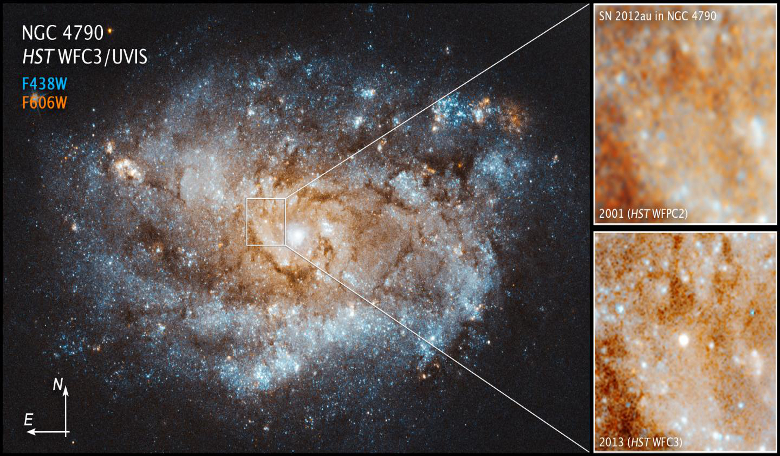With beams of energetic radiation that shoot out from a fast spinning, incredibly dense but compact body, pulsars are known to be the leftover core of a star that went supernova. However observing the transition from an exploding massive star to an object that is about the size of a large city but contains more mass than the sun has so far never been documented; until now.
Researchers studying SN 2012au, a supernova that exploded six years ago, knew they had come across something special when the data revealed that although the event wasn't bright enough to be termed a "superluminous" supernova, it was extremely energetic and long-lasting.
Supernovae can be so bright they outshine their host galaxies, but eventually this light does dim over the ensuing months or years. Sometimes a reminder of this almighty explosion is reignited as the blasted off gaseous remains of the nova slam into nearby hydrogen-rich gas and it temporarily gets bright again.
If this does happen, then astronomers can identify the interaction as it shows up as a hydrogen spike on a spectrograph. Not so for SN 2012au. Not only is this supernova still shining bright when others would have ebbed away by now, but the tell-tale spectral spike of hydrogen in the data was missing - something else was therefore continuing to energise the surroundings.
When a pulsar is born form the ashes of the supernova, if it has a magnetic field and rotates fast enough, it may develop into a pulsar wind nebula. "If there truly is a pulsar or magnetar wind nebula at the centre of the exploded star, it could push from the inside out and even accelerate the gas," said Dan Milisavljevic, an assistant professor of physics and astronomy at Purdue University and lead author of a paper recently published in the Astrophysical Journal Letters.
"We know that supernova explosions produce these types of rapidly rotating neutron stars, but we never saw direct evidence of it at this unique time frame," Milisavljevic said. "This a key moment when the pulsar wind nebula is bright enough to act like a lightbulb illuminating the explosion's outer ejecta."
"If we return to some of these events a few years later and take careful measurements, we might observe the oxygen-rich gas racing away from the explosion even faster,” he added.
Many of the elements essential to life come from supernova explosions, so it goes without saying that these types of events are of great interest. But superluminous supernovae are also potential sources of gravitational waves and black holes, and astronomers think they might be related to other kinds of phenomena, like fast radio bursts and gamma ray bursts.
Unfortunately due to their rarity and distance from Earth they can be difficult to observe, but hope is on the horizon. With resolution and sensitivity to out perform their predecessors, the next generation of telescopes, those dubbed the "Extremely Large Telescopes," will have the ability to see these events in greater detail than ever before.
"This is a fundamental process in the universe. We wouldn't be here unless this was happening," Milisavljevic said. “I think it's crucial for us, as citizens of the Universe, to understand this process."











